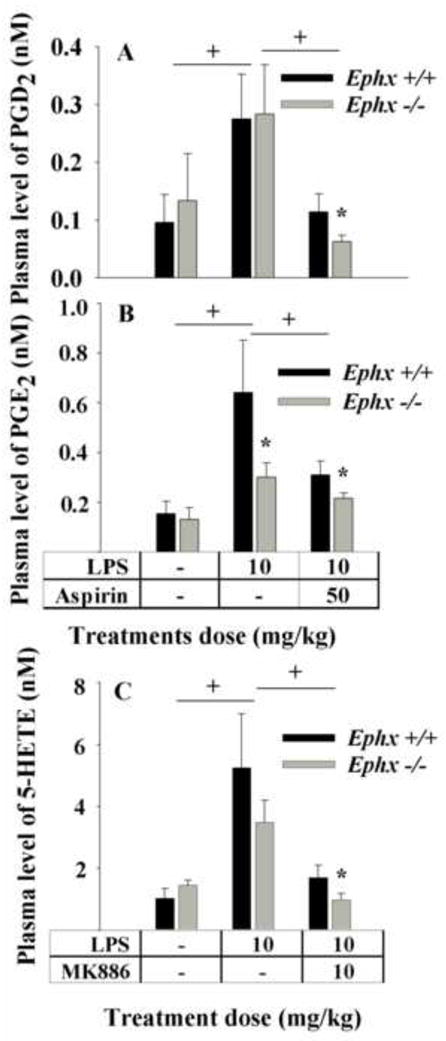Fig.4.

Disruption of the sEH gene in mice demonstrates an inflammatory mediator profile similar to that of a chemical knockout using a sEHI. LPS was administered to Ephx2-null mice (gray bar) and their wildtype conspecifics (black bar) and plasma eicosanoid profiles 6 h post-LPS were determined. (A) The plasma levels of PGD2 in Ephx2-null mice were not different than wild-type counterparts upon LPS administration. However whereas aspirin reduced PGD2 significantly in wild-type mice, a further synergistic reduction of PGD2 was detected in Ephx2-null mice receiving aspirin. (B) The plasma levels of PGE2 in Ephx2-null mice were significantly lower than wild-type mice upon inflammation, pointing out lower COX activity in the Ephx2-null animals. However whereas aspirin reduced PGE2 significantly in wild-type mice, a further reduction of PGE2 was detected in Ephx2-null mice receiving aspirin. (C) The plasma levels of 5-HETE in both Ephx2-null (n=4) and wild-type (n = 6) mice significantly increased after LPS administration. MK886 administration reduced 5-HETE levels in both strains. However, the Ephx2-null mice had still lower levels of 5-HETE after MK 886 administration. † denotes significant difference, * significant difference from wild mice with same treatment (P > 0.05) determined by ANOVA followed by Tukey’s posthoc comparison test.
